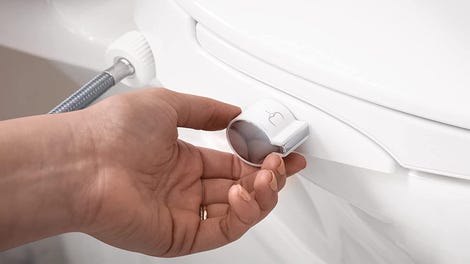Self-Driving Cars Need to Be 99.99982% Crash-Free to Be Safer Than Humans

Image: gremlin (Getty Images)
As companies race to build self-driving cars, there’s always a question: How safe is safe enough? After all, humans drivers still crash every day — surely a system that crashes less, even if it’s not perfect, is better than your average FaceTiming motorist. Just how good does an autonomous car have to be, in order to beat us fleshy human drivers at the safety game?
A lot better than you’d expect, is the answer. A self-driving car can’t be 99 percent perfect, it can’t be 99.9 percent or even 99.999 percent. Human drivers, on average, avoid crashes 99.999819 percent of the time. To beat that, autonomous vehicles will have to hit nearly six nines of reliability.
A recent tweet from Matt Farah got the Jalopnik staff thinking. A system that’s 99.9-percent reliable sounds nearly perfect, but in reality, that 0.1-percent error rate is enormous. So how good does a fully autonomous vehicle need to be in order to be safer than a human driver? As Jalopnik’s resident mathematician, figuring this out fell to me — and to data pulled from the National Highway Traffic Safety Administration.
According to NHTSA, Americans drove 2,903,622,000,000 miles in 2021. That’s nearly three trillion miles, many of which were likely the sort of boring, uneventful highway driving where current Level 2 driver-assistance systems excel. American human drivers crashed 5,250,837 times in 2021 — once every 552,983 miles traveled.
G/O Media may get a commission

13% off
Moen Electric Bidet w/ Heated Seat
Temperature-controlled
Hook up to both your hot and cold water so you can control the temperature plus it comes with a heated seat. Now that’s doing your business in luxury.
Here’s how the numbers break down for human drivers in America:
Image: Steve DaSilva / Jalopnik
American human drivers have a 0.000181-percent crash rate. Put another way, on a per-mile basis, we’re 99.999819-percent crash-free. For an autonomous car to be safer than a human driver, it needs to avoid crashes at least 99.9982 percent of the time.
“Oh, but Steve, those other decimal points are tiny,” you’re thinking. “How much of a difference could all those nines possibly make in the real world?” More than you’d think. If you drive the average amount for American drivers (14,263 miles per year), and 99.9 percent of your miles are crash-free, you’re still going to spend 14.3 miles every year crashing. At 99.99982-percent crash-free, you’ll spend 0.03 miles per year crashing — a year almost entirely free of impacts.
Unfortunately, it’s tough to tell whether today’s crop of experimental autonomous vehicles are coming close to human safety levels. NHTSA requires manufacturers who test “Advanced Driving Systems” to report all crashes to the administration, but those reports only include the crashes — not the miles driven without a crash. For now, it’s safe to assume the robots have a fair bit of catching up to do. Score one for flesh.



